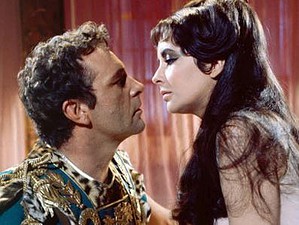In the realm of literature and drama, characters with obsessive and hysterical traits have long captured the imagination of audiences. Are you perhaps one or the other?

By understanding the nature of these characters and their psychological underpinnings, we can gain deeper insights into their significance and the narratives in which they exist, as well as make inferences in regard to our own romantic relations.
Obsessive Characters
Obsessive characters are driven by an intense preoccupation or fixation on a particular object, idea, or goal. Their behavior is characterized by repetitive actions, rigid thinking patterns, and an overwhelming need for control. Examples of obsessive characters in literature include Captain Ahab from “Moby-Dick” and Jay Gatsby from “The Great Gatsby.” Through psychological analysis, we can unravel the motivations and complexities behind their obsessive nature.
Hysterical Characters
Hysterical characters, on the other hand, exhibit excessive emotional and dramatic behavior. They may be prone to outbursts, exaggeration, and attention-seeking. Hysterical characters often create conflict and drive the plot forward. Iconic examples of hysterical characters can be found in drama and film, such as Blanche DuBois from “A Streetcar Named Desire” and Norma Desmond from “Sunset Boulevard.” Analyzing their characteristics and psychological makeup provides valuable insights into their motivations and the impact they have on storytelling.
Comparing Obsessive and Hysterical Characters
While obsessive and hysterical characters share some common traits, they differ in fundamental ways. Obsessive characters tend to be inwardly focused, with a strong desire for control, while hysterical characters are outwardly expressive and seek attention. However, there are instances where these traits can overlap, creating complex and multidimensional characters. Understanding these differences and similarities allows us to appreciate the variety of human personalities portrayed in literature and drama.
Impact on Plot and Storytelling
The presence of obsessive and hysterical characters can greatly impact the plot and storytelling. Obsessive characters often drive the narrative forward with their relentless pursuit of their goals, leading to intense conflicts and dramatic tension. Their obsessions can create suspense and propel the story toward its climax. On the other hand, hysterical characters inject emotional volatility and unpredictability into the narrative. Their outbursts and exaggerated behavior can disrupt the status quo and introduce chaos or comic relief. By analyzing the roles of these characters, we can gain a deeper understanding of how their presence shapes the overall story arc.
Conclusion
Obsessive and hysterical characters in literature and drama offer fascinating insights into the complexities of human psychology. Understanding their traits, motivations, and impact on storytelling allows us to appreciate the rich tapestry of characters that authors and playwrights create. By delving into the nature of these characters, we can gain a deeper understanding of the human condition and the various ways in which individuals cope with their desires, fears, and emotions.
Now, I do not mean to say that humans are either obsessive or hysterical in character. We probably are a bit of each, sometimes more, sometimes less, depending on circumstances and situations. Our psyche is multi-faceted, that’s for sure. This polarity and how we each fit into the dimension is an interesting point to consider, though, when looking for a partner like a significant other.

